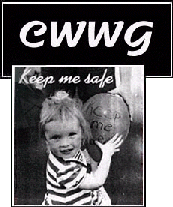 New Curriculum at Berea College
New Curriculum at Berea College- Proposed Chemical Weapons Incinerator
- Service Learning Project for Environmental Issues Class
- More Questions Arise…
In 1992-93 Berea College was in the final stages of developing a new curriculum. Dr. Jan Pearce was a member of the planning committee for the course in quantitative reasoning which would be required of all students in the new curriculum. During these committee meetings, she began the development of a new course designed around real world projects which she believed would bring the course material to life and address the knowledge transfer difficulties in a way that textbook problems could not. She created the course “Environmental Issues: A Mathematical Modeling Approach” in which students can satisfy the introductory quantitative reasoning requirement at Berea College by modeling environmental data and using the models for forecasting. This course is typically populated by freshman and sophomores from a wide range of majors on campus.
In the Fall of 1996, David Sawyer, director of an outreach and service organization at Berea College, brought to Jan’s attention a call for service learning project proposals from Campus Compact and the Corporation for National Service. Upon reading it, Jan became interested in writing a grant to involve her students in modeling a local issue.
A proposed local chemical weapons incinerator issue dominated all other environmental issues in the area. Located only ten miles from Berea College in Richmond, Kentucky is the Blue Grass Army Depot (BGAD), a site which stores approximately 1.6% of this nation’s chemical weapon stockpile. In spite of strong local opposition to incineration and the existence of alternative chemical weapon disposal methods, the US army had been promoting a plan to build an incinerator at BGAD to dispose of the chemical weapons stockpile. Thus, the Kentucky Environmental Foundation (KEF) was formed in 1990 to oppose incineration as a method of chemical weapon disposal.
Because of the importance of the issue to the local community, it had to be the one first considered as the topic of a modeling project. The problem in Jan’s mind was that modeling even a small portion of this issue would be too difficult for the level of knowledge of the students in the Environmental Issues class. Nevertheless, Jan went to discuss the possibility of such a project with the KEF. Together, Jan and the activists at the KEF, were able to identify a modeling project of an appropriate level.
The Chemical Stockpile Emergency Preparedness Program Immediate Response Zone had been defined by governmental agencies as “the closest geographic areas around a hazard site that are the most rapidly and severely affected by a hazard.” This zone was calculated as a ten kilometer radius slightly reshaped for ease of planning to conform to roads. Seeing that the government had employed a radial model that did not even take into consideration average wind directions or speeds made it easy to believe that students in the course could successfully develop a better mathematical model for predicting the dispersion from the proposed incinerator. Thus, Jan wrote the grant and received funding in Spring of 1996.
The students in the class collected relevant data, researched existing related studies, and developed their own simple mathematical model. This service-learning project was identified as exemplary and published in “Science and Society: Redefining the Relationship”1. The students in the class presented their work to an affiliate of the KEF in a public meeting held at the Court House in the City of Berea. The response from the KEF was quite positive. In fact, members of the KEF began asking many additional questions that could be considered mathematically. However, Jan realized that finding answers to some of these questions would require modeling of a significantly more sophisticated nature. Discussing these questions and how answers could be found with a colleague, James Lynch, motivated the two of them to begin a summer research program working in collaboration with local environmental organizations.